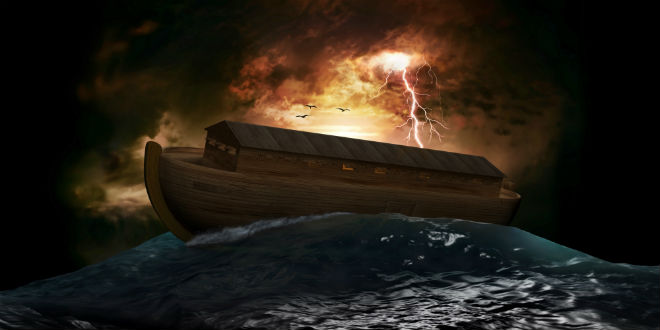
All we need is Noah’s Ark
HAVANA – Cuba has lived a Caribbean version of the Great Flood recently. The western and central parts of the Island have experienced strong and intense rains, accompanied by thunderstorms, for more than 10 days. Damages are yet to be quantified. All this is due to the effects of a peculiar subtropical storm without winds, the first of the season: Alberto.
In Cuba we go from one to the other. Climate change seems determined to put us against the ropes. To have a magnitude of this rain-soaked tragedy, a person belonging to the Defense Council has told local TV stations that in the province of Villa Clara more damaged homes have been reported than during the memorable and destructive Hurricane Irma.
According to a press report, more than 500 houses have been damaged because of landslides, 87 of them a complete loss and more than 300 people are under protection in evacuation centers. There was also much damage to the power lines, with 20,000 people without service, 65% of them in the provincial capital.
Without a hint of wind capable of hoisting a kite, Alberto has managed to move us from a painful drought to another travesty that will soon be revealed — none other than the loss of crops by excess of that vital (and now lethal) liquid.
The phreatic mantle, now supersaturated, has not been able to absorb even one drop of water. Therefore, the reservoirs and dams had to open their floodgates and the force of the waters collapsed bridges such as the one on the Zaza River, flooded neighboring villages and blocked from local roads to stretches of the National Highway at the height of Villa Clara, while the road to the city of Cienfuegos, in the south central part of the island, was cut off.
Still unable to estimate the total damage, a kind of knife in the back of our rickety economy, I doubt much could have been done with the thousands of tons of tobacco threatened during a fortnight under the continuous rainfall, and for a similar number of days in the rest of the country.
In Ciego de Ávila, for example, in just 48 hours, almost half a meter of water fell (500 millimeters), while in Matanzas, in the Colón area, 323 millimeters were reported. Aguada de Pasajeros (translated: Travelers Waterfall) lived up to its name, 558 mm of rainfall.
Something completely unexpected and never seen in the history of hurricanes occurred in our aqueducts. The pipes of around 70 of them were affected by landslides and closures, in addition to the contamination of the waters. Sancti Spíritus was the province most affected, followed by Cienfuegos, according to reports from the National Institute of Hydraulic Resources (INRH).
The Civil Defense Force has not stopped warning of how dangerous it is to deal with water and that people must remain calm in their homes, or places where several thousand have been evacuated.
Without creating great alarm, but with precaution, preparation and wisdom, specialists have predicted no less than eight hurricanes of great intensity for this season that begins in less than a week.
Shortly before the close of this edition, Alberto had touched land on the Gulf coast of the United States, while more than half of Cuba remained covered by a large gray blanket.
‘A complex situation’
This is how Miguel Díaz-Canel Bermúdez, president of the Councils of State and Ministers, defined the current scenario during a government meeting convened last Tuesday to analyze and draw up strategies in the face of such an abnormal situation, where the main difficulty lies in creating access to critical points.
Each minister reported the area under his or her jurisdiction and it was the Minister of the Interior, Julio Cesar Gandarilla, who announced that so far four people had died “due to imprudence.”
At the conclusion, Díaz-Canel asked each minister what “forces and resources” were available to face the tragedy.
Officially some 51,000 persons have been reported under protection; 1,384 homes have been affected, including 174 considered total losses and 272 partially destroyed. Although not yet accounted for, the damage to agriculture is significant, while in the tourism sector, a government spokesperson indicated that tourists have been under total protection, and the tourist properties have experienced some leaks in the false ceilings, but that “the damage is not considerable.”
Until Wednesday of this week it was impossible to make a general assessment of the effects caused by the intense rains that continue in mountainous areas. In the future, when the sun is out again, we expect more destruction when the structures of the houses are dilated. The public health authorities have also warned against what always follows, epidemics and plagues.
Misfortunes seem to follow us. So it’s up to each one of us, according to our prayers, beliefs or bets, to put something of themselves to reach a minimum of tranquility and prosperity…


